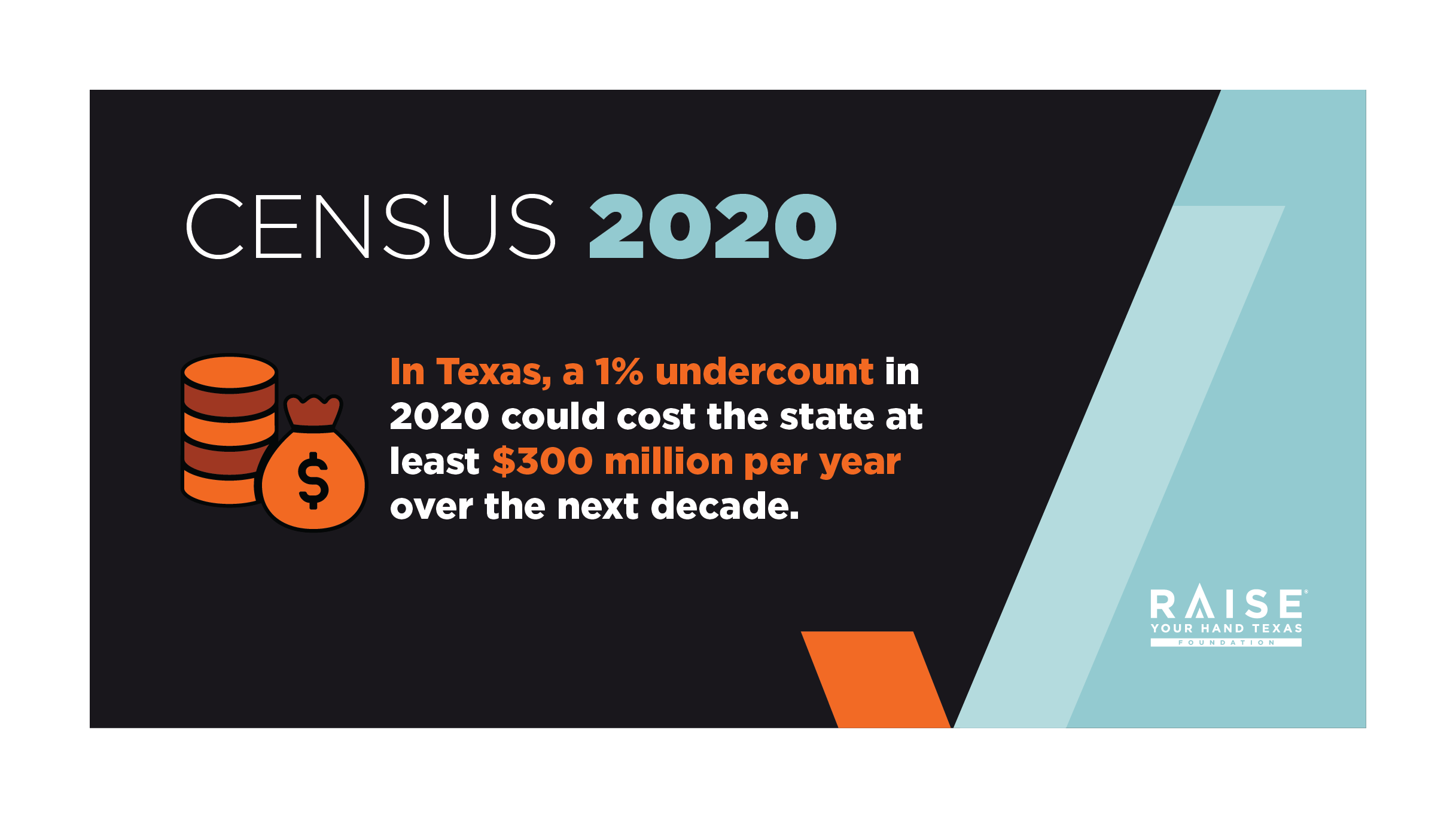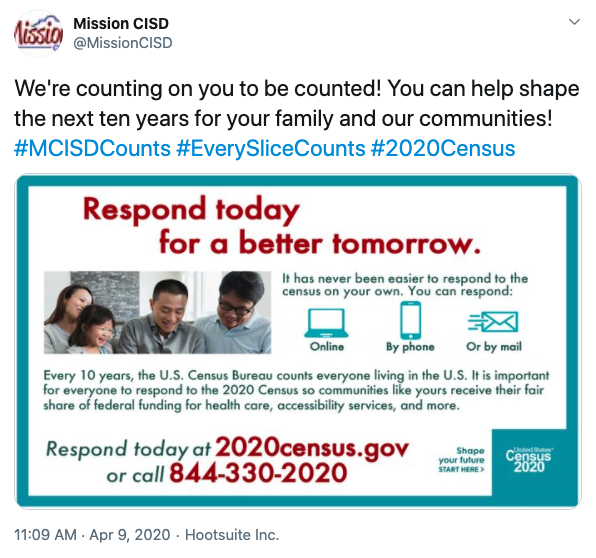
categories
Countdown to Being Counted

September 22, 2020
With just days until the 2020 Census deadline and a lot of other worries on their plates, school districts are scrambling to help get people counted
By Max Rombado
Policy Research Associate
Raise Your Hand Texas
The challenges of 2020 have hit just about everything hard, including the 2020 Census.
In mid-March, Texans opened their mailboxes to find the first invitations to participate in the 2020 Census. Days later, COVID-19 caused schools to close, people to shelter in place, and census field operations to be suspended.
Now, six months have gone by, and with less than a month to a tighter-than-expected Sept. 30 deadline, the state’s census response rate still hovers at a mere 60 percent. In many places, like the Rio Grande Valley, the rates are about ten points lower, if not more.
Recently, I spoke with census officials and school leaders about what this might mean for public schools and what they are doing about it.
The costs of an undercount
To understand the importance of getting an accurate census count, it’s important to know what’s at stake.
The census drives billions of federal dollars to public education, most of which is allocated to the National School Lunch Program, Title I Grants, and Special Education grants. In other words, the funding goes to the students who need support the most.
The Texas Demographics Center reports that a one percent undercount in Texas could result in the loss of $300 million per year or $3 billion for the next decade. With almost seven percent of the population still uncounted, the state risks losing out on over $2 billion dollars per year.

Millions of students – and their families – rely on school programs that depend on the census for funding. “While this pandemic has created challenges for census outreach efforts, many of our students need those resources today more than they ever did,” says Raise Your Hand Texas’ Regional Advocacy Director (Dallas) Kaylan D. Smith, “For that reason, it’s crucial that we continue to help communities get counted on the census.”
An important role to play
With so much on the line, particularly for public schools, getting an accurate count is extremely important.
But schools also have a unique opportunity to help. The Census officials I spoke with said school partnerships have always been an important part of the outreach effort. However, now in this time of limited contact and communication, no entity is better connected to families, neighborhoods, and communities.
Craig Verley, director of public relations and marketing at Mission Consolidated Independent School District, a school district in the Rio Grande Valley, remembers what it was like back in March.
“Everything came to a screeching halt,” he said, describing how census training events and parent conferences were suspended indefinitely.
As a result, Verley pivoted to social media, developing graphics and sharing information on the district’s social media channels.

In Austin, Leonor Vargas, the administrative supervisor for parent programs and the person leading the district’s census initiatives, launched a “Census Ambassadors” program to train their Parent Support Specialists (who serve all 70 Title I campuses) for a comprehensive census outreach campaign.
Some of the “hard-to-count” areas in Austin are in predominantly Spanish-speaking communities. As a result, Vargas has made a strong effort to keep Spanish-speaking families informed through the district’s Spanish-language radio and TV stations.
Ana Arredondo, a partnership specialist for the U.S. Census Bureau, said response rates would be drastically lower without the support districts like these. Arrendondo, pointed to efforts in Aldine and Pasadena where both districts were able to kick-start important conversations around supporting the district’s hard-to-count communities by holding census events, sharing response data and celebrating those making progress.
An unexpected time crunch
When news broke in August that the U.S. Census Bureau set the new deadline to Sept. 30, it created even greater challenges for the schools working to ensure their students and families are counted. This has caused school district leaders to talk about incorporating the census into their back to school registration and school supply pick-up days.
Aldine ISD even let Arredondo set up census assistance sites at two campuses located in the neighborhoods with the lowest response rates.
“We were able to ask parents from their cars if they had responded to the census. If not, we helped them do it from their phones,” Arredondo said.
Arredondo said there are other ways districts can continue to help by prioritizing census promotion at food distribution sights, back-to-school emails, and pick-up days.
“It’s important that families know it’s still not too late,” Verley (Mission CISD) said.
This pandemic has made it clear that our students need support now more than ever. Without an accurate count, school districts across the state could see a decline in funding over the next decade at a time when every dollar matters. Dollars that support critically important needs such as life skills, after school programs, internet access, and meals for hungry learners.
Make sure you get counted. It’s not too late.
Resources
Visit the 2020 Census Web Page to complete the census online or by phone. Services are available in multiple languages to accommodate non-English speakers.
See which neighborhoods in your school districts need help responding to the census with the 2020 Census Hard to Count Heat Map.
Organize census outreach events with the Texas Counts 2020 Census Toolkit.
Learn more about the census’ impact on public education in Texas by visiting the Raise Your Hand 2020 Census Web Page.



